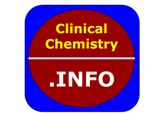Immunochemical measurement of urinary free light chains and Bence Jones proteinuriaLaura Michettion June 3, 2025 at 10:00 am
Clin Chem Lab Med. 2025 May 30. doi: 10.1515/cclm-2025-0265. Online ahead of print. ABSTRACT OBJECTIVES: To evaluate the characteristics of an immunochemical urinary free light chains (uFLC) test in screening and quantifying Bence Jones proteinuria (BJP) and its potential application in laboratory practice as an alternative to the gold standard method, urine immunofixation (UIFE) and … Read more
